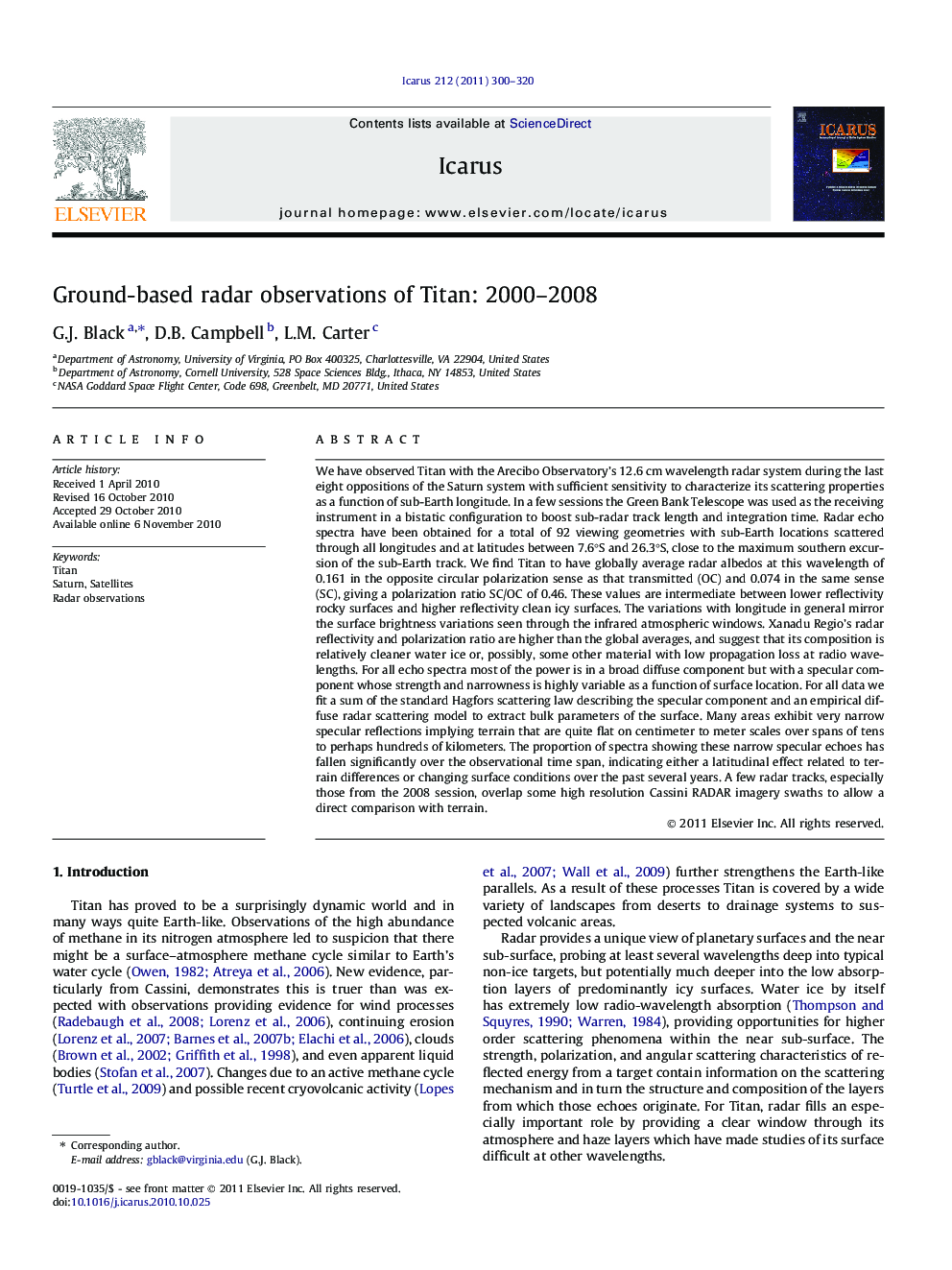| کد مقاله | کد نشریه | سال انتشار | مقاله انگلیسی | نسخه تمام متن |
|---|---|---|---|---|
| 10701504 | 1021135 | 2011 | 21 صفحه PDF | دانلود رایگان |
عنوان انگلیسی مقاله ISI
Ground-based radar observations of Titan: 2000-2008
دانلود مقاله + سفارش ترجمه
دانلود مقاله ISI انگلیسی
رایگان برای ایرانیان
کلمات کلیدی
موضوعات مرتبط
مهندسی و علوم پایه
علوم زمین و سیارات
علوم فضا و نجوم
پیش نمایش صفحه اول مقاله

چکیده انگلیسی
We have observed Titan with the Arecibo Observatory's 12.6 cm wavelength radar system during the last eight oppositions of the Saturn system with sufficient sensitivity to characterize its scattering properties as a function of sub-Earth longitude. In a few sessions the Green Bank Telescope was used as the receiving instrument in a bistatic configuration to boost sub-radar track length and integration time. Radar echo spectra have been obtained for a total of 92 viewing geometries with sub-Earth locations scattered through all longitudes and at latitudes between 7.6°S and 26.3°S, close to the maximum southern excursion of the sub-Earth track. We find Titan to have globally average radar albedos at this wavelength of 0.161 in the opposite circular polarization sense as that transmitted (OC) and 0.074 in the same sense (SC), giving a polarization ratio SC/OC of 0.46. These values are intermediate between lower reflectivity rocky surfaces and higher reflectivity clean icy surfaces. The variations with longitude in general mirror the surface brightness variations seen through the infrared atmospheric windows. Xanadu Regio's radar reflectivity and polarization ratio are higher than the global averages, and suggest that its composition is relatively cleaner water ice or, possibly, some other material with low propagation loss at radio wavelengths. For all echo spectra most of the power is in a broad diffuse component but with a specular component whose strength and narrowness is highly variable as a function of surface location. For all data we fit a sum of the standard Hagfors scattering law describing the specular component and an empirical diffuse radar scattering model to extract bulk parameters of the surface. Many areas exhibit very narrow specular reflections implying terrain that are quite flat on centimeter to meter scales over spans of tens to perhaps hundreds of kilometers. The proportion of spectra showing these narrow specular echoes has fallen significantly over the observational time span, indicating either a latitudinal effect related to terrain differences or changing surface conditions over the past several years. A few radar tracks, especially those from the 2008 session, overlap some high resolution Cassini RADAR imagery swaths to allow a direct comparison with terrain.
ناشر
Database: Elsevier - ScienceDirect (ساینس دایرکت)
Journal: Icarus - Volume 212, Issue 1, March 2011, Pages 300-320
Journal: Icarus - Volume 212, Issue 1, March 2011, Pages 300-320
نویسندگان
G.J. Black, D.B. Campbell, L.M. Carter,